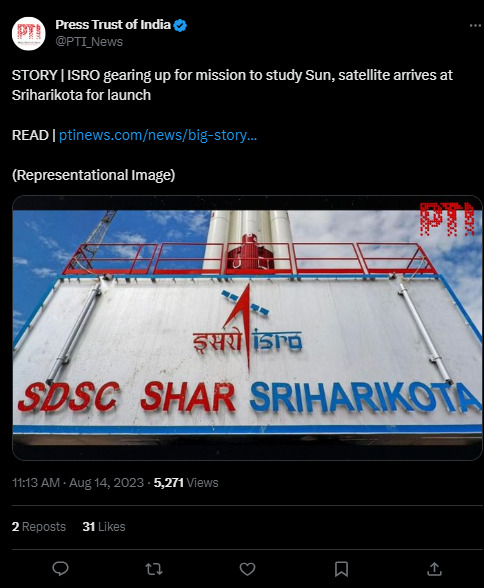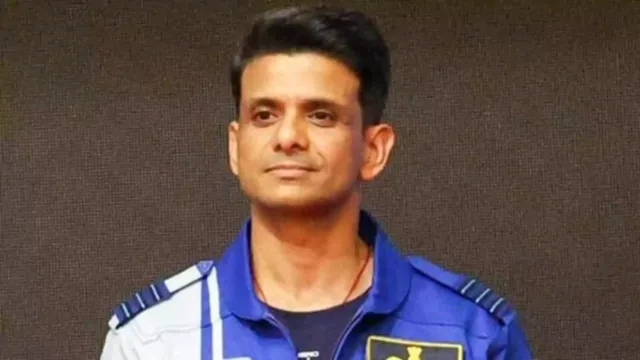ISRO: According to ISRO, Aditya-L1, the first Indian observatory to study the Sun from orbit, is getting set to launch soon. The national space agency with its Bengaluru headquarters announced in an update on the mission that the satellite, developed at U R Rao Satellite Centre here, has arrived at the ISRO’s spaceport in Sriharikota in Andhra Pradesh. “Mostly September first week,” an ISRO official told PTI when asked about the date of the launch.
A Halo Orbit Around Lagrange Point 1

The Lagrange point 1 (L1) of the Sun-Earth system, which is around 1.5 million kilometres from Earth, is where the spacecraft will be positioned in a halo orbit. A major benefit of a satellite positioned in the halo orbit around the L1 point is that it may continuously observe the Sun without experiencing any occultation or eclipses, according to ISRO. “This will provide a greater advantage of observing the solar activities and its effect on space weather in real time,” it said. The spacecraft is equipped with seven payloads that use electromagnetic, particle, and magnetic field detectors to study the photosphere, chromosphere, and the Sun’s outermost layers (the corona). Four payloads will use the unique vantage point L1 to observe the Sun directly, and the remaining three payloads will conduct in-situ particle and field research there, contributing to significant scientific studies of the propagation of solar dynamics in the interplanetary medium. “The suits of Aditya L1 payloads are expected to provide most crucial information to understand the problem of coronal heating, coronal mass ejection, pre-flare and flare activities and their characteristics, dynamics of space weather, propagation of particle and fields etc.,” ISRO said.
Aditya-L1 Mission’s Key Objectives in Solar Science
The study of solar upper atmosphere (chromosphere and corona) dynamics, the research of chromospheric and coronal heating, the physics of the partially ionised plasma, the beginning of coronal mass ejections, and flares are the main scientific goals of the Aditya-L1 mission. the physics of the solar corona and its heating mechanism, as well as the in-situ particle and plasma environment, which provide data for the study of particle dynamics from the Sun. temperature, velocity, and density measurements of the coronal and coronal loops plasma; the development, dynamics, and genesis of the coronal mass ejections; determine the series of events that take place at various layers (chromosphere, base, and extended corona) and ultimately result in solar eruptive events; observations of the solar corona’s magnetic field structure and field strength;drivers for space weather (origin, composition and dynamics of solar wind). While the in-situ instruments at L1 will examine the immediate surroundings, Aditya-L1’s instruments are tailored to observe the solar atmosphere, particularly the chromosphere and corona.
Keep watching our YouTube Channel ‘DNP INDIA’. Also, please subscribe and follow us on FACEBOOK, INSTAGRAM, and TWITTER.




